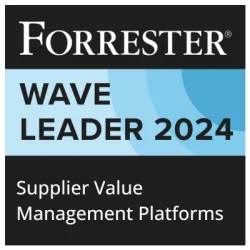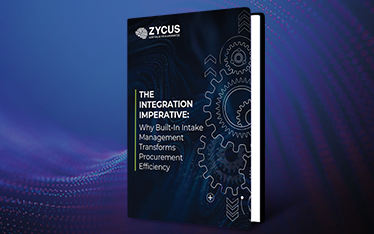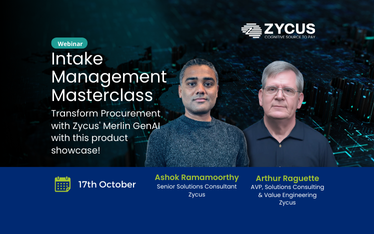Procurement can be divided into two main categories – Direct Procurement vs. Indirect Procurement. In this article, we will explain what indirect procurement is, the difference between direct and indirect procurement, the working of direct and indirect purchase orders, and the impact on businesses.
What is Indirect Procurement?
Indirect procurement involves obtaining goods and services needed to support overall business operations, rather than directly manufacturing a product. Examples include office supplies, company vehicles, software systems, marketing services, etc.
For a software services firm, indirect procurement makes up most of its purchasing needs, while a manufacturer would have both direct and indirect procurement.
Direct Procurement vs Indirect Procurement
While both are essential, some key differences between direct and indirect procurement are:
- Business Impact: Direct procurement focuses on inputs that determine the final product and customer experience. Indirect procurement provides back-end support and resources.
- Centralization: Direct procurement is centralized and strategic with dedicated teams. Indirect procurement is decentralized across departments.
- Spend Visibility: Direct procurement gets greater visibility and investment as a revenue generator. Indirect is often overlooked despite significant spend.
- Supplier Relationships: Direct category managers influence suppliers. Indirect relationships are sporadic.
- Savings: Large direct purchases allow better savings negotiation. Indirect savings come from aggregate small purchases.
Challenges with Managing Indirect Spend
Managing indirect spend poses challenges due to its diffuse nature:
1. Numerous stakeholders and commodities make coordination difficult
Since indirect procurement caters to the daily functioning of the internal stakeholders, it is often decentralized to the various departments – HR will involve recruitment and training, Marketing will involve contracting with advertisement agencies and so on. This results in many internal groups involved, procuring multiple commodities across numerous categories.
2. Many low-value transactions spread spend, inhibiting savings identification
Given the large number of stakeholders and categories involved, absence of dedicated procurement teams and mandated spend policies, there is rampant sporadic buying behavior by various business units. This sows the seeds for complex supplier relationships that do not produce any value for the organization as well as maverick spending. This also inhibits visibility into the suppliers’ performance and increases associated risks. Consequently, Zycus’ Pulse of Procurement revealed poor visibility into supplier performance as one of the major pain points for procurement professionals.
3. Lack of spend categorization limits analysis opportunities
After getting a glimpse of the sheer complexity, lack of transparency into indirect spend data is the next evident roadblock. Since this is caused by the numerous categories under which spend data need classified, we can imagine the consequence of this – it prevents procurement teams, and the organization, from identifying and increasing cost savings in indirect procurement. How do we control something we can barely identify?
Additionally, when we look at direct procurement, the transactions usually have high monetary worth. The procurement teams have powerful relationships with suppliers that allow them to negotiate for higher discounts and hence, are able to recognize considerable savings opportunities. Indirect Procurement misses this mark as volume of transactions is large and disparate with large number of stakeholders involved while the monetary worth is low.
In the backdrop, 10 Key Measures to Manage Indirect Spend found that 54% of the global procurement leaders consider cost savings as a top focus area.
Read a Case Study- Few personnel have the expertise to handle complex indirect spend
To manage the complexities that arise from indirect procurement, organizations require skilled personnel that have expertise in aspects like category and change management, contracting, managing supplier relationships and data analytics. Majority of the enterprises lack people involved in indirect procurement who will have the required skills to effectively manage indirect procurement strategy. Pulse of Procurement 2018 also revealed shortage of skilled/talented procurement workforce as one of the major 2018 pain points.
Well, this is not a pretty picture.
However, it is in the challenges where true potential lies. A study by EY on ‘Indirect Procurement Optimization’ found that by optimizing the indirect procurement strategy, enterprises can achieve savings up to 25%. In the current global scenario where competition is fierce and inflation levels are rising, organizations need to save wherever they can to stay afloat.
Best Practices for Managing Indirect Procurement
To optimize indirect spend, leading practices include:
1. Implement tracking tools to analyze and categorize spend
The Achilles heel of indirect procurement would be the large number of unclassified, random expenditure categories that are immensely difficult to track. Add to that the number of stakeholders dispersed across the organization with no measurement systems and procurement mandates, well, it just makes it even worse. Hence, the need to implement a holistic expenditure tool to track, identify and categorize the expenditure categories is unequivocal.
It is crucial to know that while, typically, category managers working with direct materials have ownership of both the process and expenditure; indirect category managers simply execute the procurement process without having any ownership of the process and expenditure.
For them to implement best practices, having and utilizing their leadership and skills to influence cost, timing and stakeholders is important. Having an integrated and well-structured expenditure tool will further aid this.
Read more about Zycus AI Tool for Spend Data Management
2. Cross-functional teams to align stakeholders
Once you have an expenditure tool in place for effective categorization, it is also important to have cross-functional or cross-business teams in place. A cross-functional team, that represents all business units in an organization, will outline the vision and mission of the procurement process, define responsibilities and accountability for each unit, identify all stakeholder needs and requirements and ensure their alignment.
This will allow procurement teams to effectively manage the various indirect expenditure categories and avoid duplication of efforts and costs.
3. Stakeholder engagement to reduce apprehension
We know that, in a lot of scenarios, business units view the procurement teams as the policy policing unit that dictate adherence to the procurement process, ethical standards, etc. that simply lead to delays and unnecessary red tape in the organization. The stakeholders are apprehensive that strictly following the procurement policies can inhibit the relationships they have with their suppliers. They’d prefer to engage with suppliers on their own terms rather than competitive biddings or auction processes.
Well, that makes management of indirect procurement and achieving cost reductions in it rather difficult.
So, it is important to build a good procurement team that will not only outline the procurement processes but will also understand the stakeholders’ business needs. Reducing stakeholder apprehensiveness will motivate them to adopt best practices that will help optimize procurement of indirect materials. It will further help if the procurement teams work closely with the cross-functional teams to ensure complete optimization of indirect procurement processes.
4. Pre-defined savings policies to prevent budget erosion
It is common to see that due to the absence of pre-defined savings disposition, despite achieving savings in indirect procurement process, it is not visible in the organizations’ profit and loss statements. To put it clearly, if the procurement team saves $1,000 in the administrative budget, the admin team will spend that $1,000, on more office supplies for all business units, as it is still in their budget.
To avoid vaporization of savings, prior to the indirect procurement process flow, all the involved stakeholders need to define and mandate what happens to the realized savings.
5. Design a governance structure to drive progress
Leadership support forms the building blocks for assuring efficient management of indirect procurement process flow, or for that matter, any process in an organization. In its absence, even with optimization policies in place, it is difficult to deliver the value that the enterprise is attempting to achieve.
A well-structured governance structure needs to be there invariably to set and approve strategies, targets and budgets for the business units; decide what needs to be done with the realized savings, assess projects and remove related roadblocks. One can imagine that in the absence of top management support, stakeholders can lose priority and participating in implementing any of the best practices and simply adhere to what they feel is best.
In a Nutshell
In conclusion, it is important to understand what differentiates indirect procurement from direct procurement – it shows us why it is time to invest organizations’ resources towards identifying the challenges and adopting best practices to manage the phenomenon that is indirect procurement. It clearly cannot be ignored, especially if you want to compete in the current global as well as local scenario. It goes without saying that enterprises still need to focus on their direct procurement processes and continue their path of optimizing the same. The need of the hour is to get indirect procurement on the path as well.
Optimizing indirect spend can generate major cost reductions. Addressing the unique complexities via visibility, collaboration and governance is key.
Interested in transforming your indirect procurement? Zycus’ source-to-pay solutions can help manage spend effectively. Request a demo today!
Related Posts
- Creating a better procurement function — one user, at a time
- Procure to Pay process round table
- Procure to Pay Archives
- 6 Key Procurement Organizational Structures You Can Consider To Optimize
- Top 10 Winning Skills for Procurement Professionals
- Procurement Process: 7 Steps for Optimal Efficiency and Cost Savings
- Mastering Indirect Spend Five keys to Success










